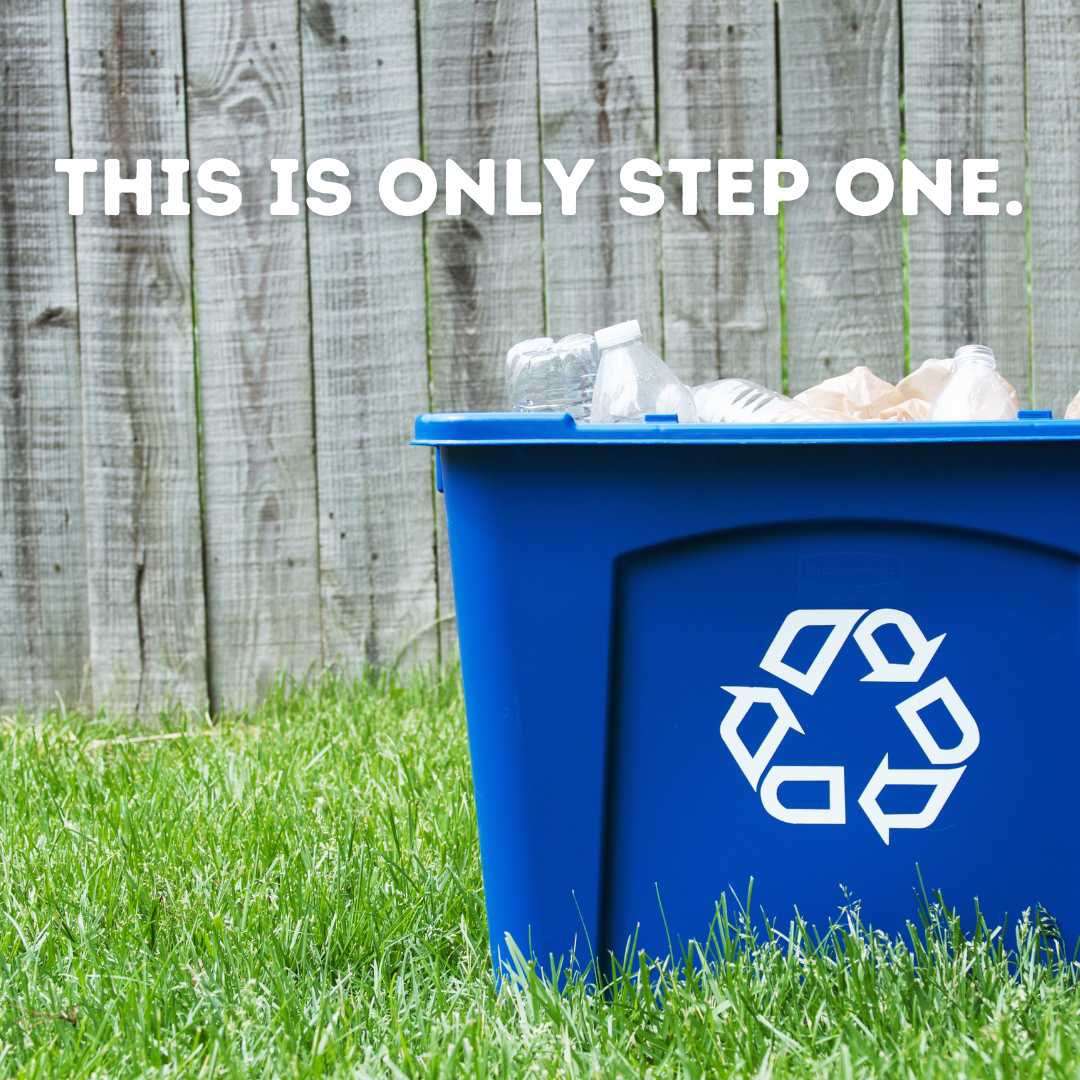NEWS
BEYOND THE BIN: The Post-Consumer Recycled Material Market

Many people don’t realize their role in recycling beyond separating recyclables into the blue bin. When it comes to recycling, our responsibility as consumers is actually two-fold. To complete the cycle of recycling, not only do we need to “recycle right”, but we also need to help generate demand for recycled goods through intentional shopping habits.
As you may know, after you separate recyclable materials from the trash, they make their way to your local Materials Recycling Facility (MuRF). Here, the materials are sorted, baled, and sold at market value to manufacturers to make into products again.
Recycling is a commodities market. As with all commodities, supply and demand, as well as the quality of the product impacts its value. The markets can vary greatly. For example, Resource Recovery Magazine recently stated that the national average price for corrugated containers is down 32% from an average $114/ton to a current average of $78/ton. This compares with $169/ton in September of 2021. Plastics are down on their luck right now as well. When demand goes up, so will its value.
We want to increase the demand for post-consumer recycled products so we can build a strong market for recycled goods. If we drive up market value for products made from recycled content, it spurs deeper investment in recycled materials across Materials Recycling Facilities (MuRFs), reclaimers, and organizations that work with the waste stream.
In addition to helping increase the market value of recycled materials, buying products made from recycled materials also:
- Reduces the amount of materials that end up in landfills/incinerators
- Supports the development of green technologies
- Creates jobs and strengthens the local economy
- Helps protect the environment. Compared to products made with virgin materials, products made from recycled materials:
- Utilize less natural resources and energy to produce
- Generate less air and water pollution
- Produce less greenhouse gases
Recycling helps preserve our environment and reduce waste, but as in any economy, it only works if the products and packaging made from recycled materials are in high demand. When shopping, opt for products with labels like “made with recycled content,” “contains recycled plastic,” or “postconsumer content,” which are recycled materials from homes and businesses. Unfortunately, the recycling symbol itself is unregulated, which allows manufacturers to widely and intentionally misrepresent their products (called greenwashing). To ensure a product is made from recycled materials, read the labels, do your research, or speak with a product representative before purchasing.